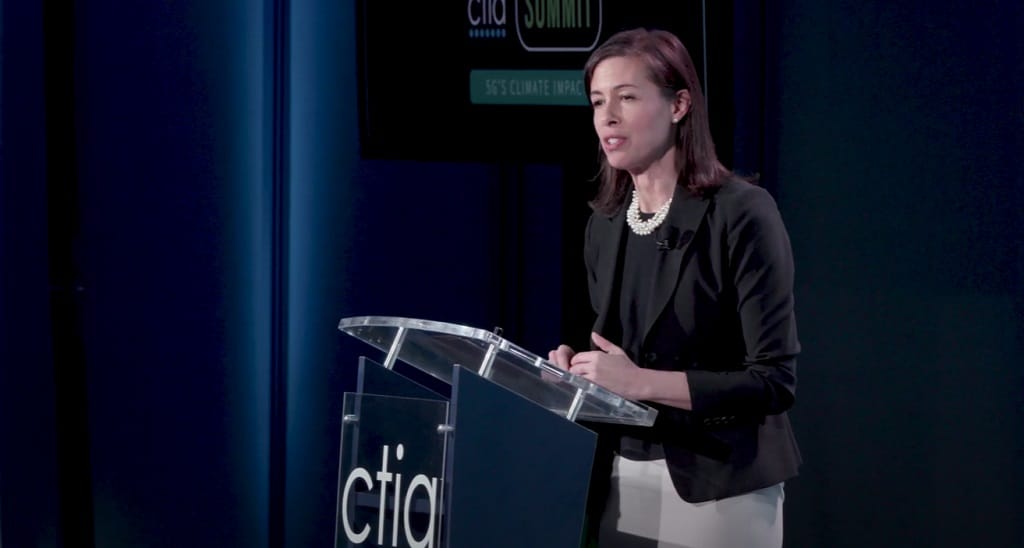K-12 Cybersecurity, FCC Inquiry Into Spectrum Usage and Data, 6 GHz For Wi-Fi
Cyberattacks can cost up to $1 million for schools, according to a GAO report.

August 7, 2023 — The White House announced on Monday additional actions it will take to strengthen the cybersecurity of the nation’s K-12 school system.
The U.S. Department of Education will establish a Government Coordinating Council that will coordinate activities, policy, and communications between federal, state, local, tribal, and territorial education leaders to strengthen the cyber defenses of American school systems.
“The GCC will be a key first step in the Department’s strategy to protect schools and districts from cybersecurity threats and for supporting districts in preparing for, responding to, and recovering from cybersecurity attacks,” read the White House announcement.
Additionally, the Department of Education and the Cybersecurity and Infrastructure Security Agency jointly released the second document in a series of guidance documents to assist educational leaders in sustaining digital infrastructure. The Federal Bureau of Investigation and the National Guard Bureau are also releasing updated resource guides for how to report cybersecurity incidents.
According to a press release, the United States has experienced an increase in cyberattacks that target schools in recent years. In the 2022-23 academic year, at least eight school districts faced a “significant” cyberattack that impacted students, families, teachers, and administrators. Personal data were stolen and publicly disclosed and sensitive information and security systems were leaked online.
According to a 2022 report by the Government Accountability Office, schools can take anywhere from two to nine months to recover from cyberattacks and monetary loss ranges from $50,000 to $1 million.
Several education technology providers, like Amazon Web Services, Cloudflare, PowerSchool, and more have committed to providing free and low-cost resources to school districts.
The Federal Communications Commission proposed in July a pilot program under the Universal Service Fund to provide up to $200 million over three years to strengthen cyber defenses in schools and libraries.
FCC starts inquiry into spectrum usage and data
The FCC released an inquiry into non-federal spectrum usage, particularly how new data sources and AI technology can aid spectrum management on Thursday during the August Open Commission Meeting.
“Machine learning can provide insights that help better understand network usage, support greater spectrum efficiency, and improve resiliency by making it possible to heal networks on their own,” said Chairwoman Jessica Rosenworcel in a statement.
“Today’s inquiry is a way to understand this kind of potential and help ensure it develops here in the United States first,” she said. “We start by focusing on spectrum utilization.”
The inquiry seeks comment on how to better obtain more sophisticated knowledge of non-federal spectrum use and how to take advantage of modern capabilities for doing so in a cost-effective, accurate, scalable, and actionable manner.
“Finding new ways to make more spectrum available is vital to our economic success and national security,” added Commissioner Geoffrey Starks. “Developing accurate information about how we’re using spectrum today may be one of the best ways to ensure we have enough of it available for use tomorrow.”
The FCC joined with the National Science Foundation to discuss how Ai can be used to improve agency operation in July. Officials said that AI could analyze federal grant programs to determine how successful they are and find solutions for problem areas as well as address illegal robocalls by flagging certain patterns that are deemed suspicious.
Coalition letter to FCC urges final rules for 6 GHz to avoid a ‘Wi-Fi digital divide’
More than a dozen public interest groups urged the FCC to finalize key issues to free up the 6 gigahertz band for Wi-Fi use in a way that “does not create a new Wi-Fi digital divide.”
In 2020, the FCC unanimously adopted a rule that authorized 1,200 megahertz of unlicensed spectrum for next generation Wi-Fi. By providing Wi-Fi users wide channels, the Wi-Fi technology has the potential to distribute multi-gigabits of connectivity at a low latency with high reliability.
The organizations, including Public Knowledge, National Digital Inclusion Alliance, and the Schools Health Libraries Broadband Coalition, urged the FCC in a letter to adopt the increased power level for low power devices and the proposed authorization of very low power devices as proposed in the 6 GHz proposed rulemaking. “In both cases the record is now replete with updated analyses that demonstrate the risk of actual harmful interference in exceedingly unlikely,” claimed the letter.
The authorization of VLP devices and LPI are “particularly crucial for digital equity and inclusion, for continued U.S. leadership in next generation Wi-Fi, and for virtually all consumers, businesses and community anchor institutions that increasingly rely on Wi-Fi for connectivity,” read the letter.
As connected devices and high-bandwidth applications become increasingly common, they will require increasing bandwidth to accommodate the growing exchange of traffic, claimed the letter. This makes the capacity and capability of the 6 GHz band urgent, it read.
“Americans increasingly equate broadband with Wi-Fi,” read the letter. “Wi-Fi is the essential path to reliable and affordable broadband internet access, carrying more traffic than all other wireless technologies combined.”
The letter claimed that Wi-Fi is “a fundamental complement to mobile carrier networks, which could not possibly provision 5G-quality throughput for outdoor and mobile use if Wi-Fi was not available.”








